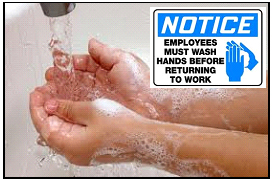 Employers often ask if they are responsible for Workers’ Compensation benefits if their employees injure themselves on the way to work.
Employers often ask if they are responsible for Workers’ Compensation benefits if their employees injure themselves on the way to work.
Usually (and thankfully), an employer is not liable for providing workers’ compensation benefits for injuries sustained during one’s daily commute. This is known as the “coming and going” rule. However, like most things with law, there are exceptions. The rule is not as simple as many people perceive it to be.
Knowledge is Power, and businesses have to be aware of the various exceptions to the coming and going rule. The workers’ compensation attorneys at Adelson, Testan,Brundo & Jimenez (ATB Law) work with employers to ensure that businesses are aware of these exceptions and can take action to protect themselves from potentially being liable for employee injuries while traveling.
The exceptions to the “coming and going” rule usually consider whether the travel of the employee was somehow a benefit to the employer and if it was closely related to the employee’s job duties. While there are many exceptions to the “coming and going” rule, they generally fall into four general categories:
- The employee has no fixed place of employment and travels to multiple job sites
- The employee injures himself while traveling to a location away from his normal job site
- The employee is on a special assignment for the employer; and
- Travel is a significant part of the employee’s job duties.
Category 1- Traveling to Multiple Job Sites
If a worker has to use his personal vehicle to travel to multiple job sites in one day and gets injured en route to one of these job sites, are the injuries compensable?
The 1972 decision in the case of Hinojosa v. WCAB allowed an injured farm worker to be entitled to workers’ compensation from his employer. The employee in that case used his own vehicle while traveling to various farms and jobsites. The court’s reasoning concluded that the employee’s injury is covered by Workers’ Compensation because having his personal vehicle at work is an “implied condition of employment.” This exception would apply when an employee travels to multiple work sites and does not have one specific, fixed location of employment.
Category 2- “Commercial Traveler” Rule
Another exception to the “coming and going” rule applies when an employee is away on a business trip. The general rule is that an employee is considered to be acting in the scope of his or her employment the whole time while away on business.
In the court case of IBM Corp. v. WCAB, an employee usually worked at one job site but had to travel out of state for a special business trip. His employer encouraged and gave him permission to visit out of state relatives while he was there. He had to work Monday through Friday but made a 60 mile trip to visit his relatives over the weekend. He was killed in an automobile accident when his cousin was driving him back to his hotel. The court concluded that the 60-mile trip by the employee was a normal incident of his travel in connection with his out of town temporary work assignment. The “commercial traveler” rule suggests that an employer is responsible for injuries sustained by an employee while traveling for work, even if they seem unrelated to the employee’s job duties.
Category 3- “Special Mission” Rule
Although an employer is customarily not liable for injuries sustained by an employee en route to work, an injury is compensable if during his regular commute- the employee also is performing a special errand or “mission” for his employer. Employers should think twice before asking an employee to perform a special task for them before coming into work.
The employee’s conduct is “special” if it is “extraordinary in relation to routine duties, not outside the scope of employment.” (Schreifer v. Industrial Acc. Com. (1964) 61 Cl. 2d 289). For example, in the Schreifer case, the employee was a sheriff and was scheduled to begin work at 7 p.m. on a particular day. At 1 p.m. of that day his supervisor called him at his home and instructed him to report for duty “as soon as possible.” The employee left for work in his own vehicle and was involved in a car accident.
The court reasoned that because the employee was on a special mission at the time of the accident, the employer was liable for Worker’s Compensation benefits. Coming in hours early than he normally was required to report was a “special service” to his employer.
Category 4- Traveling is part an employee’s primary job duty
When an employer requires its employee to travel in order to accomplish their job duties, the “coming and going” rule does not apply. Remember, the big question is whether an employee’s injuries occurred while they were performing their normal job duties. See Labor Code Section 3600 (a) (2) which states an injury is compensable “where at the time of the injury, the employee is performing service growing out of and incidental to his or her employment and is acting within the course of his or her employment.”
If an employee is a pilot, bus driver, delivery truck driver, etc. their travel is well within the scope of the employee’s course of employment. For example, in Huntsinger v. Glass Containers Corporation, the employer was liable for injuries of a traveling repairman who had extensive use of a truck while visiting customers in the field. Their travel is for the sole benefit of the employer and they wouldn’t be able to do their job without driving or traveling.
It’s important to point out that a careless employee driver won’t absolve an employer from having to provide workers’ compensation benefits. In Westbooks v. WCAB, a bus driver who sustained injury as a result of nearly hitting an oncoming vehicle while recklessly driving his bus but was still entitled to receive workers’ compensation benefits. As mentioned in our previous blog post, drivers distracted by their smart phones can cost their employers thousands of dollars in Workers’ Compensation litigation.
Conclusion
While injuries of employees during travel to and from work are normally not covered by workers’ compensation, there are exceptions. An employer may be responsible to provide their employee with compensation benefits during travel, if the travel was related to and for the benefit of the employer. Of course, each case is fact specific but the attorneys at Adelson, Testan, Brundo & Jimenez are experienced with working with employers to inform them about limiting the risk of being liable for employee accidents while traveling.
Disclaimer: The information contained in this Blog is provided for informational purposes only, and should not be construed as legal advice on any subject matter. An attorney/client relationship is not formed by reading this article. The content of this Website contains general information and may not reflect current legal developments, verdicts or settlements.
 As part of Adelson, Testan, Brundo and Jimenez’ ongoing educational seminar series, presented on ATB Law’s YouTube Channel, David Tew, managing partner at our Fresno office, covers workers’ compensation issues and defense strategies related to Valley Fever.
As part of Adelson, Testan, Brundo and Jimenez’ ongoing educational seminar series, presented on ATB Law’s YouTube Channel, David Tew, managing partner at our Fresno office, covers workers’ compensation issues and defense strategies related to Valley Fever.
























